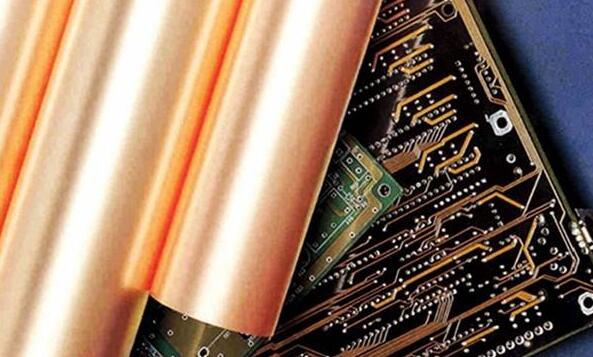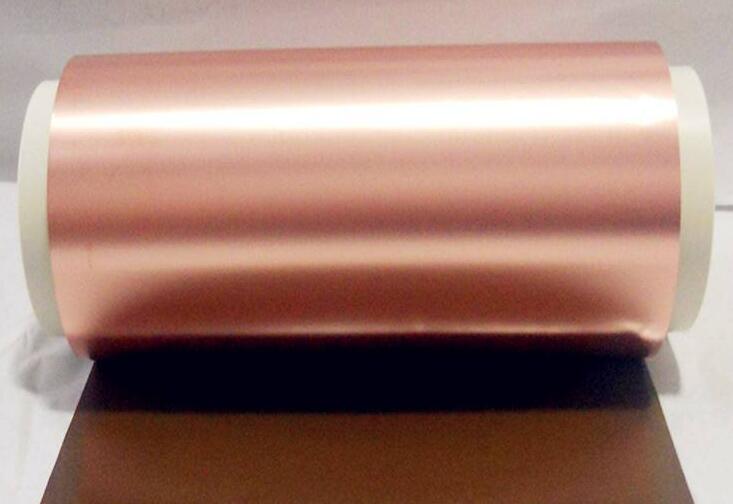(1) The development of world PCB copper foil production
Copper foil production was started in 1937 at the Anaconda Copper Refinery in the United States. The copper foil was then used only for waterproof purposes on wooden roofs. In the early 1950s, with the advent of the PCB circuit board industry, the copper foil industry became an important sophisticated industry associated with the electronic information industry.
In 1955, Yates Corporation of the United States separated from Anaconda Company and established itself as the world's first company specializing in the production of electrolytic copper foil for PCB circuit boards. Gould Corporation of the United States also invested in this industry in 1957, dividing Yates'exclusive market in copper foil for PCB multilayer circuit boards worldwide. Following the introduction of U.S. copper foil manufacturing technology by Mitsui in Japan in 1968, Furukawa and Nippon Mining in Japan cooperated with Yates and Gould respectively to make great progress in the Japanese copper foil industry.
In 1972, Yates Corporation's patent for electrolytic copper foil production (U.S. Pat 3674656) was published, marking a new stage in the world of electrolytic copper foil manufacturing and surface treatment technology.
According to statistics, the worldwide production of electrolytic copper foil for PCB circuit boards reached about 180,000 t in 1999. Among them, 50,000 t in Japan, 43,000 t in Taiwan, 19,000 t in mainland China and 10,000 t in South Korea. The worldwide output of electrolytic copper foil is predicted to increase to 253,000 t in 2001. The fastest growth rates were Japan (73,000 t in 2001), Taiwan (65,000 t in 2001).
Japan, which occupies the first place in copper foil production and technology in the world, has made rapid progress in copper foil production and technology in recent years due to the development of printed circuit boards and copper-clad boards. In recent years, it has also established overseas manufacturers with Japanese investment in North America, China, Taiwan, Southeast Asia, Europe, and other countries and regions. The main electrolytic copper foil manufacturers in Japan are Mitsui Metal Mining Company, Japan Energy Company (formerly Japanese Mining Company), The Electric Company, Fukuda Metal Foil Industry Company, Japan Electrolysis Company, etc. The production features of electrolytic copper foil in Japan are: in recent years, it is developing towards more advanced technology and cutting-edge products.
Taiwan is currently the second-largest producer of electrolytic copper foil in the world. The main large-scale manufacturers are Changchun Petrochemical Company, Taiwan Copper Foil Company, South Asia Plastic Company, etc.

(2) High-performance electrolytic copper foil
In recent years, some high-performance electrolytic copper foil manufacturing technologies have been continuously innovated and developed in the world copper foil industry. An overseas copper foil market research expert recently concluded that the market share of high-performance copper foil will reach over 40% in the near future due to the high-density fine linearization (LIS = 0.10 mm/0.10 mm), multilayer (6 layers), thinning (0.8 mm) and high-frequency PCB multilayer circuit board. The main types and characteristics of these high-performance copper foils are as follows.
1. Excellent tensile strength and elongation Copper foil Excellent tensile strength and elongation Electrolytic copper foil, including at normal and high temperatures. Increasing the tensile strength and high elongation under normal conditions can improve the processing performance of electrolytic copper foil, enhance the rigidity and avoid wrinkles to improve the production qualification. High-temperature extensibility (HTE) copper foil and high-temperature copper foil with high tensile strength can improve the thermal stability of the PCB circuit board and avoid distortion and warping. At the same time, the copper foil cracks at high temperature (generally copper dormitory is used in the inner layer of PCB multilayer board, making through-hole inner ring, which is easy to crack during immersion welding). The use of HTE copper foil can be improved.
2. Low profile copper foil
Advances in high-density wiring technology for PCB multilayer boards have made it unsuitable to continue to use conventional electrolytic copper foil for high-precision PCB circuit board graphics. In this case, a new generation of electrolytic copper foil with one-to-one low profile (LP) or ultra-low profile (VLP) appears one after another. The low-profile copper foil was successfully developed in the early 1990s (1992-1994) in the United States (Gould's Arizona plant) and Japan (Mitsui Metal Company, Guhe Electric Company, Fukuda Metal Industry Company) almost simultaneously.
In general, the raw foil is made by electroplating, and the current density used is very high. Therefore, the micro crystallization of the raw foil is very rough and shows coarse columnar crystallization. The "ridge line" of the transverse faults in its slices is highly undulating. The crystallization of LP copper foil is very delicate (2) μ Below m) are equiaxed grains, without columnar crystals, crystallized in sheets with flat edges. Low surface coarsening. The average coarseness (R.) of VLP copper foil is 0.55 by actual measurement. μ M (General copper foil is 1.40) μ M). Maximum coarseness (R m? X) is 5.04 μ M (generally 12.50 copper foil) μ M) Comparing the properties of various types of copper foil as shown in Table 5-1-8 (The data in this table are taken as examples for various types of copper foil products from Mitsui Metal Co., Ltd. in Japan).
VLP, LP copper foil not only guarantees the general performance of ordinary copper barrels but also has the following characteristics.
(1) The initial precipitation of VLP and LP copper foil is the crystallization layer which keeps a certain distance. The crystallization of VLP and LP copper foil is not like vertical connection overlapping upward, but rather a slightly concave and convex planar sheet. This crystalline structure prevents the sliding between the metal grains and has greater resistance to the deformation caused by external conditions. Therefore, the tensile strength and elongation (normal and hot) of copper foil are better than those of general electrolytic copper foil.
(2) LP copper foil is smoother and delicate on a rough surface than general copper foil. At the interface between the copper foil and the base plate, there is no residual copper powder (copper powder transfer phenomenon) after etching, which improves the surface resistance and interlayer resistance characteristics of PCB, and improves the reliability of dielectric properties.
(3) It has high thermal stability and does not recrystallize copper on thin substrates due to multiple layers.
(4) The etching time of the graphic circuit is less than that of the common electrolytic copper foil. Side etching is reduced. The white spots are reduced after etching. Suitable for fine line fabrication.
LP copper foil has high hardness, which improves and improves the drillability of PCB multilayer plates. It is also more suitable for laser drilling.
LP copper foil surface, after the PCB multilayer plate pressing and forming, is relatively flat, suitable for the production of precision lines.
LP copper foil is uniform in thickness, a small delay in signal transmission after PCB circuit board is made, good characteristic impedance control, no line-to-line, layer-to-layer noise, etc.
Low profile copper foil is very different from general electrolytic copper foil in fine structure, such as grain size, distribution, crystallization orientation, and distribution. The manufacturing technology of low profile copper foil has made great improvement and technological progress on the basis of electrolyte formula, additives, and plating conditions in the original general electrolytic copper foil production.

3. Super thin copper foil for IC carrier development
Carrier electronic products, such as mobile phones, laptops, and IC carrier boards, use multi-layer boards with micro-buried and blind holes, as well as organic resin IC encapsulated substrates such as BGA, CSP, etc. The copper foil used is pushed towards a thin and ultra-thin foil type. At the same time, CO2 laser etching also requires very thin copper foil for the substrate material, so that direct micro-hole processing can be carried out on the copper foil layer.
Over the past 12 years in Japan, the United States, etc. μ Thin copper foil with a thickness of M has become more general in application. 9 μ M, 5 μ M, 3 μ M Copper electrolyte can be industrialized. At present, there are two main technical difficulties or key points in the production of ultra-thin copper foil: one is 9. μ M thick ultra-thin copper foil is manufactured directly from the carrier (support body) and maintains a high product qualification rate. The second is to develop new carriers for ultra-thin copper foil. At present, there are copper, aluminum, thin-film, and so on. Aluminum carriers are widely used, but when removing the aluminum carriers, strong alkali etching is required, so it is facing the problem of waste liquid treatment. Copper carrier is used for stripping, but its scriptability and treatment of stripped copper layer are also problematic. Some copper foil manufacturers in Japan have developed a film-type carrier, which has the advantages of lightweight, easy access, and good peeling property after sheet molding and pressing.